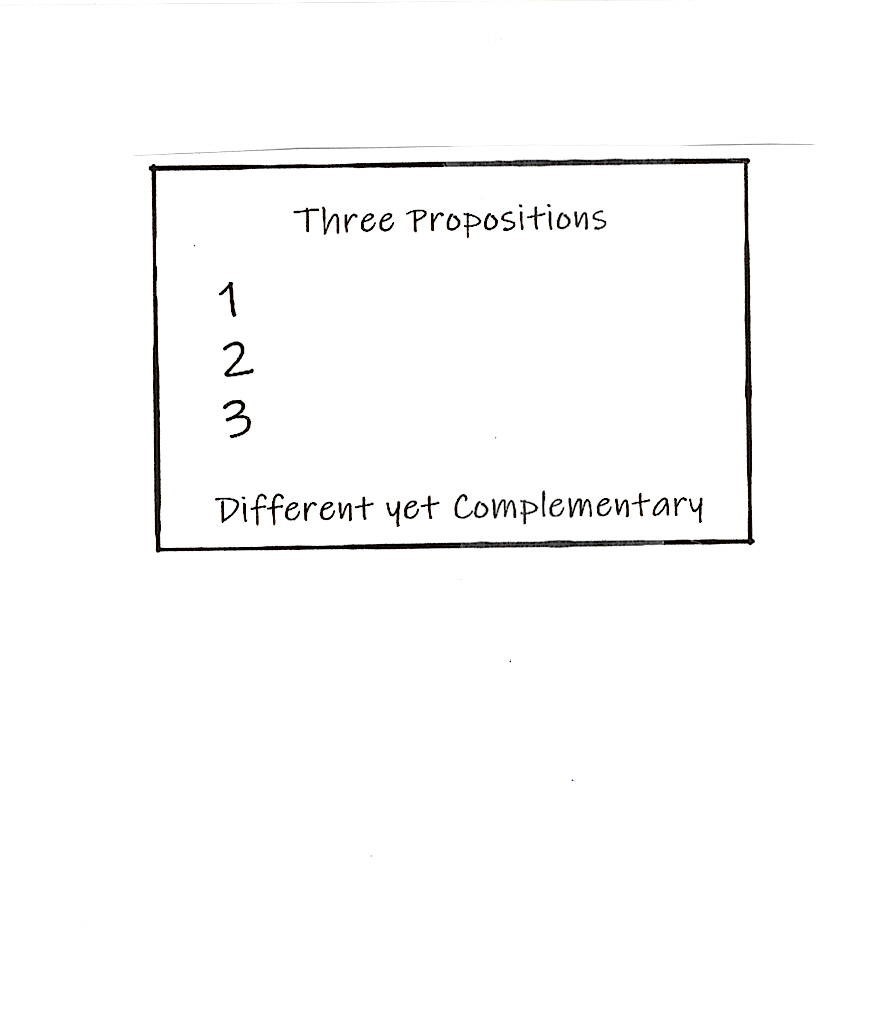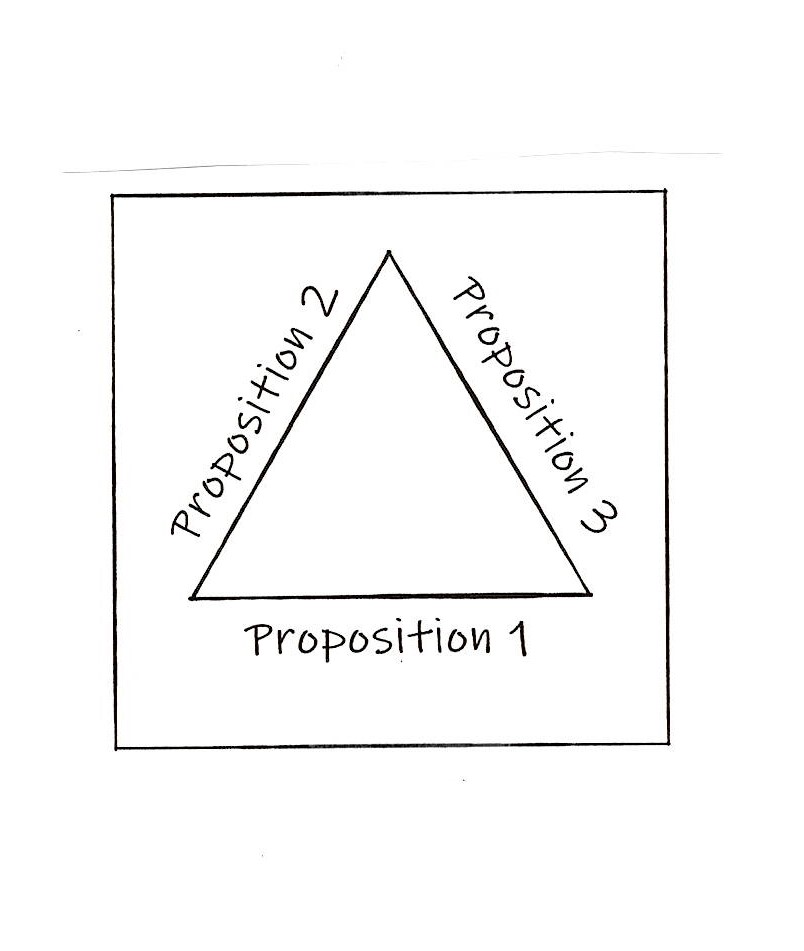
We were working together. We were invested in the facts. We were challenging each other. We were challenging ourselves. We were investing in each other’s ideas. Most importantly, we were getting somewhere.

And then, it all stopped. We had completed the list of seven significant facts. Now what?
In another System One Moment, I made a shorter list; this time it was just three items. Why? I just “knew” that having seven facts was only the beginning of something. It was the foundation. But of what?
Something about the number “3” drew me in – so I drew IT! This is how it came out.
Why three? Well, three is the smaller number of elements needed to enclose a space; or to support a stool. It’s a universal truth. Besides, trinities and triangles possess great power. Maybe it’s as simple as that.
Maybe it also has something to do with Lao Tzu’s observation that the universe is made up of three elemental forms: material, structure, and energy?
To differentiate them from the list of significant facts, I headed this list “Propositions” and added the subtitle: “Different yet Complementary.”

When I was asked about that, I simply answered (as if I had known this since the beginning of time): “Seven significant facts are the foundation.
We need to get somewhere with that. Let’s come up with three statements that are simultaneously different yet complementary and that come from but are not the seven significant facts. “The three propositions need to relate to one another, and they also have to somehow connect the significant facts.
Download Article
















